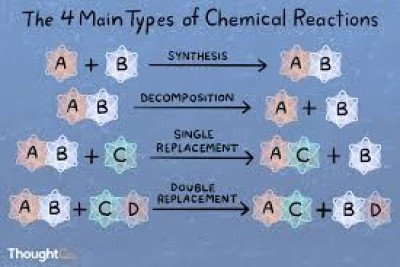Course description
Welcome to the captivating realm of life! In Class 12 Chemistry, you'll embark on a journey to explore biomolecules, the fascinating organic compounds that form the very foundation of all living organisms. Understanding their structure, properties, and functions equips you to appreciate the intricate processes that occur within cells and organisms.
A Menagerie of Essential Molecules:
Biomolecules encompass a diverse group of organic compounds, each playing a vital role:
- Carbohydrates: These are your cell's fuel source! Sugars like glucose provide immediate energy, while starches and cellulose offer long-term energy storage.
- Proteins: Imagine tiny molecular machines carrying out countless functions within cells. Proteins are the workhorses, building tissues, enzymes that drive reactions, and antibodies that fight disease.
- Lipids: Fats, oils, and waxy substances are not just for energy storage. Lipids also provide insulation, form cell membranes, and serve as signaling molecules.
- Nucleic Acids: DNA and RNA are the crown jewels of biomolecules. They store and transmit the hereditary information, the blueprint of life, from generation to generation.
- Other Biomolecules: Vitamins, enzymes, and hormones play crucial roles in various biological processes, regulating metabolism, growth, and development.
Delving Deeper:
The course delves deeper into each biomolecule category, exploring:
- Structure: How the arrangement of atoms and functional groups within each molecule determines its properties and function.
- Classification: Different types of biomolecules within each category, based on their structure and functionality.
- Chemical Reactions: How biomolecules interact with each other through various chemical reactions, forming the basis of cellular processes.
- Biological Significance: Understanding how each biomolecule contributes to the overall functioning of living organisms.
Why Study Biomolecules?
Understanding biomolecules opens doors to various fields:
- Medicine: Knowledge of biomolecules underpins understanding of diseases and development of new drugs.
- Biotechnology: Genetic engineering and other biotechnological applications rely on manipulating biomolecules.
- Nutrition: Understanding how different biomolecules function in the body helps us make informed dietary choices.
- Agriculture: Improving crop yields and developing disease-resistant plants involve understanding biomolecules.
Biomolecules are not just complex chemicals; they are the very essence of life. By studying them, you'll gain insights into the intricate workings of living organisms, appreciate the beauty of nature's designs, and unlock the potential for future advancements in various fields.
জীবনের আকর্ষণীয় জগতে আপনাকে স্বাগতম! দ্বাদশ শ্রেণিতে রসায়নে, আপনি জৈব অণুগুলি অন্বেষণ করার জন্য একটি যাত্রা শুরু করবেন, আকর্ষণীয় জৈব যৌগ যা সমস্ত জীবের ভিত্তি গঠন করে। তাদের গঠন, বৈশিষ্ট্য এবং কার্যকারিতা বোঝা আপনাকে কোষ এবং জীবের মধ্যে ঘটে যাওয়া জটিল প্রক্রিয়াগুলির প্রশংসা করতে সজ্জিত করে।
অত্যাবশ্যকীয় অণুগুলির একটি সংগ্রহস্থলঃ
জৈব অণুগুলি জৈব যৌগগুলির একটি বৈচিত্র্যময় গোষ্ঠীকে অন্তর্ভুক্ত করে, প্রতিটি একটি গুরুত্বপূর্ণ ভূমিকা পালন করেঃ
কার্বোহাইড্রেটঃ এগুলি আপনার কোষের জ্বালানির উৎস! গ্লুকোজের মতো চিনি তাৎক্ষণিক শক্তি সরবরাহ করে, অন্যদিকে শ্বেতসার এবং সেলুলোজ দীর্ঘমেয়াদী শক্তি সঞ্চয় প্রদান করে।
প্রোটিনঃ কল্পনা করুন ক্ষুদ্র আণবিক যন্ত্রগুলি কোষের মধ্যে অগণিত কার্য সম্পাদন করে। প্রোটিন হল ওয়ার্কহর্স, বিল্ডিং টিস্যু, এনজাইম যা প্রতিক্রিয়া চালায় এবং অ্যান্টিবডি যা রোগের বিরুদ্ধে লড়াই করে।
লিপিডঃ চর্বি, তেল এবং মোমের পদার্থ শুধুমাত্র শক্তি সঞ্চয়ের জন্য নয়। লিপিডগুলি অন্তরণ সরবরাহ করে, কোষের ঝিল্লি তৈরি করে এবং সংকেত অণু হিসাবে কাজ করে।
নিউক্লিক অ্যাসিডঃ ডিএনএ এবং আরএনএ হল জৈব অণুর মুকুট রত্ন। তারা বংশগত তথ্য, জীবনের নীলনকশা, প্রজন্ম থেকে প্রজন্মান্তরে সংরক্ষণ ও প্রেরণ করে।
অন্যান্য জৈব অণুঃ ভিটামিন, এনজাইম এবং হরমোন বিভিন্ন জৈবিক প্রক্রিয়াতে গুরুত্বপূর্ণ ভূমিকা পালন করে, বিপাক, বৃদ্ধি এবং বিকাশ নিয়ন্ত্রণ করে।
আরও গভীরে যাওয়াঃ
কোর্সটি প্রতিটি জৈব অণু বিভাগে গভীরভাবে অনুসন্ধান করে, অন্বেষণ করেঃ
কাঠামোঃ কীভাবে প্রতিটি অণুর মধ্যে পরমাণু এবং কার্যকরী গোষ্ঠীর বিন্যাস তার বৈশিষ্ট্য এবং কার্যকারিতা নির্ধারণ করে।
শ্রেণীবিভাগঃ প্রতিটি বিভাগের মধ্যে বিভিন্ন ধরনের জৈব অণু, তাদের কাঠামো এবং কার্যকারিতার উপর ভিত্তি করে।
রাসায়নিক বিক্রিয়াঃ কিভাবে জৈব অণু বিভিন্ন রাসায়নিক বিক্রিয়ার মাধ্যমে একে অপরের সাথে মিথস্ক্রিয়া করে, যা কোষীয় প্রক্রিয়াগুলির ভিত্তি গঠন করে।
জৈবিক তাৎপর্যঃ প্রতিটি জৈব অণু কীভাবে জীবের সামগ্রিক ক্রিয়াকলাপে অবদান রাখে তা বোঝা।
কেন জৈব অণু নিয়ে গবেষণা করা হবে?
জৈব অণুগুলি বোঝা বিভিন্ন ক্ষেত্রের দ্বার উন্মুক্ত করেঃ
চিকিৎসাঃ জৈব অণু সম্পর্কে জ্ঞান রোগ সম্পর্কে বোঝার এবং নতুন ওষুধের বিকাশের উপর জোর দেয়।
বায়োটেকনোলজিঃ জেনেটিক ইঞ্জিনিয়ারিং এবং অন্যান্য বায়োটেকনোলজিক্যাল অ্যাপ্লিকেশনগুলি জৈব অণুগুলিকে ম্যানিপুলেট করার উপর নির্ভর করে।
পুষ্টিঃ শরীরে বিভিন্ন জৈব অণু কীভাবে কাজ করে তা বোঝা আমাদের জ্ঞাত খাদ্য নির্বাচন করতে সহায়তা করে।
কৃষিঃ ফসলের ফলন বৃদ্ধি এবং রোগ-প্রতিরোধী উদ্ভিদের বিকাশের সঙ্গে জৈব অণুগুলি বোঝা জড়িত।
জৈব অণুগুলি কেবল জটিল রাসায়নিক পদার্থ নয়, এগুলি জীবনের মূল উপাদান। এগুলি অধ্যয়নের মাধ্যমে, আপনি জীবের জটিল কার্যকারিতা সম্পর্কে অন্তর্দৃষ্টি অর্জন করবেন, প্রকৃতির নকশার সৌন্দর্যের প্রশংসা করবেন এবং বিভিন্ন ক্ষেত্রে ভবিষ্যতের অগ্রগতির সম্ভাবনা উন্মুক্ত করবেন।



















